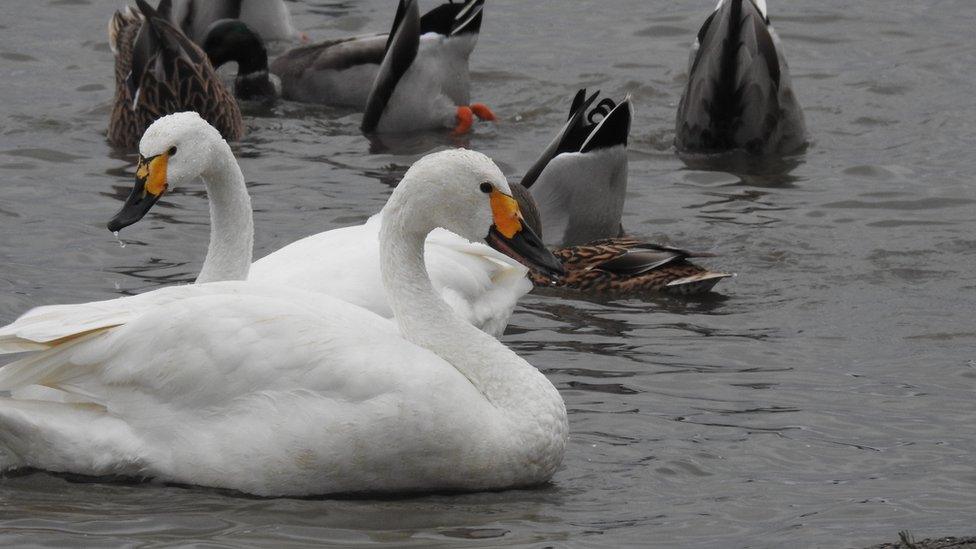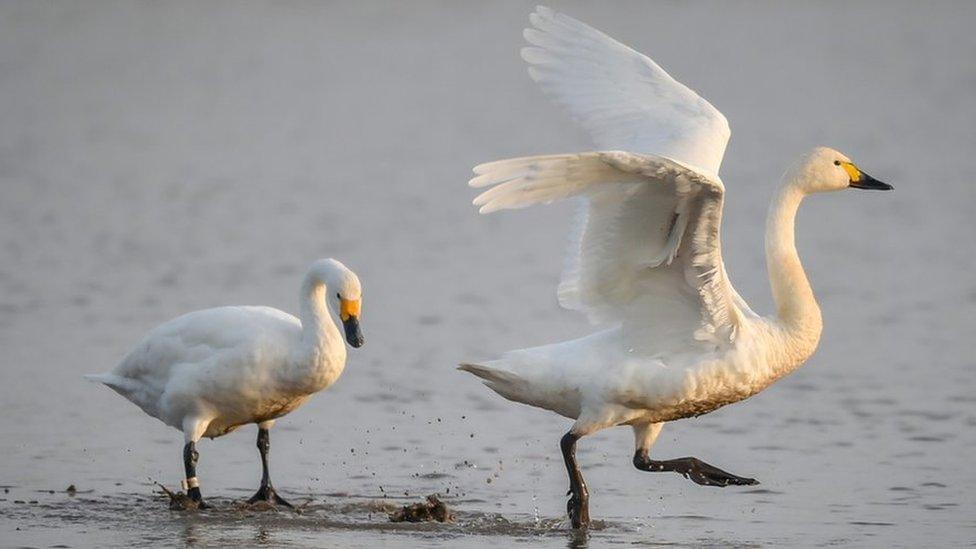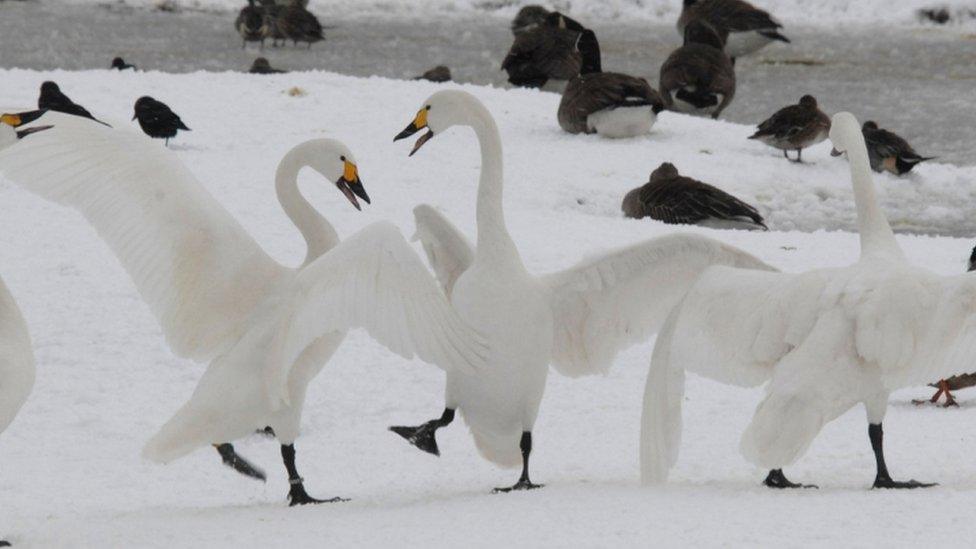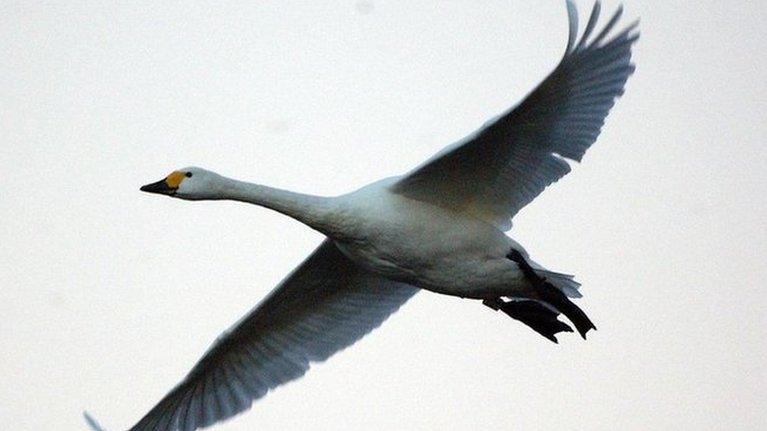Bewick's swans complete journey to Slimbridge nature reserve
- Published

The pair arrived at Slimbridge on the day of the nature reserve's 76th anniversary
A pair of Bewick's swans have arrived at a nature reserve in Gloucestershire, heralding the beginning of winter.
Swans named Fortune Two and Combo landed at the Wildfowl and Wetlands Trust (WWT) at Slimbridge on Thursday.
Their arrival in Gloucestershire is the latest since 1965, which WWT said was likely due to mild weather conditions.
Every winter the swans fly about 3,500 km (2,100 miles) on their annual migration from Arctic Russia to seek out comparatively warmer weather.
Fortune Two is 19-years-old and first arrived as a cygnet at Slimbridge with his parents Sauber and Manero in the winter of 2003.
He paired with Combo in 2005 and they have returned every year since, but have only brought back cygnets once - in 2013 - which WWT said showed the breeding challenges the swans face.

Fortune Two first arrived at Slimbridge in 2003 and has returned every year since
It was an extra special day for staff as the Bewick's swans arrived on WWT's 76th anniversary.
Dr Julia Newth, ecosystem health and social dimensions manager at WWT, said the swans had left their breeding ground in the Arctic later due to a mild autumn.
"Although we don't fully know the impacts yet, changes in the weather do influence migratory patterns," she said.
"The Bewick's swans are not wintering as far west as they used to and this is linked to the milder winters in Europe."

Wetland habitats in the UK are vitally important wintering grounds for the swans
Bewick's swans are the subject of one of the most intensive wildlife studies in the world and are identified by the unique yellow and black patterns on their beaks.
The study, started by WWT founder Sir Peter Scott, has been running for more than 50 years and recorded the lives of more than 10,000 swans.
Numbers of the swans are in decline, falling from about 29,000 in 1995 to 20,000 in 2015.

Follow BBC West on Facebook, external, Twitter, external and Instagram, external. Send your story ideas to: bristol@bbc.co.uk , external
Related topics
- Published9 November 2020

- Published12 February 2021

- Published21 December 2015

- Published27 October 2014
.jpg)